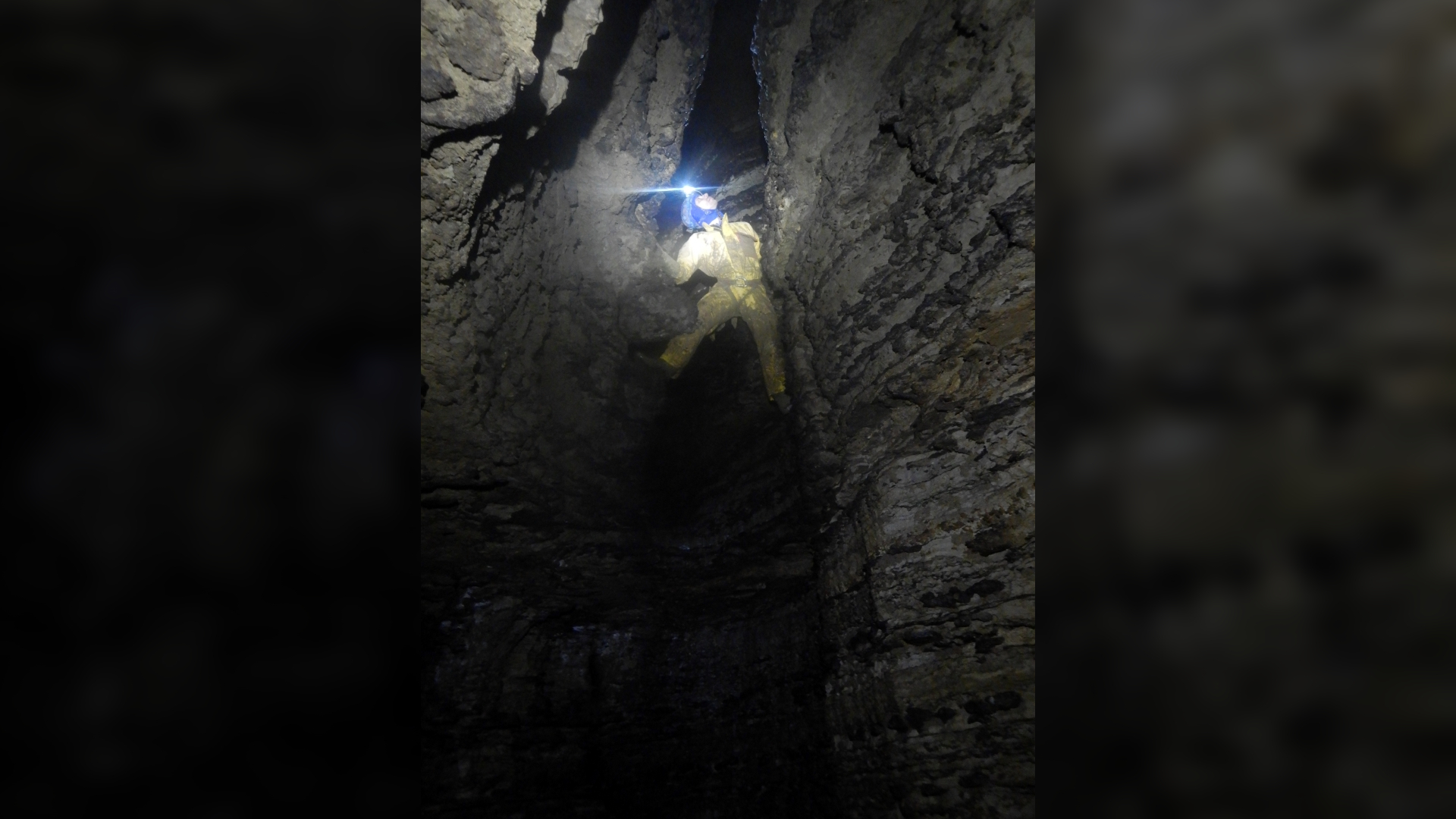Hidden passage leads explorers to deepest cave Down Under
Australia's new deepest cave is named after a coronavirus variant.

Explorers abseiled, squeezed and crawled their way through Australia's deepest cave system on July 30, boldly going where no cavers had gone before and setting a new cave depth record.
Cavers from the Southern Tasmanian Caverneers, a speleological organization based in Hobart, Australia, made it through the 1,316-foot-deep (401 meters) cave in Tasmania, an island south of mainland Australia. Stephen Fordyce, who first discovered the cave and organized the expedition, named the cave "Delta Variant" after the delta variant of COVID-19 to remind future cavers of current events, according to a statement released by Southern Tasmanian Caverneers.
The team spent 14 hours underground, navigating a subterranean system that included a 535-foot-tall (163 m) waterfall. Exploring "the cave was exceptionally strenuous," caver Ben Armstrong, who was part of the exploration, said in the statement. "It was extremely vertical, requiring hundreds of metres to be ascended and descended on ropes."
The bottom of the Delta Variant cave links up with a previously explored system called the Niggly-Growling Swallet cave system. However, the Delta Variant cave entrance is about 13 feet (4 m) higher up on the surface than the previously highest known entrance that connects to that system, so the team's new cave route set a record for the highest entrance to the lowest point, according to the statement.
While the explorers established a new record for Australia, the deepest known cave in the world is still Veryovkina Cave in Abkhazia, an autonomous republic in northwestern Georgia in the Caucasus, with a depth of 7,257 feet (2,212 m), according to Guinness World Records.
Related: Cavers discover snakes and waterfalls inside Yemen's infamous 'Well of Hell' in world-first descent
The explorers in Tasmania used lasers and dye-tracing techniques in the cave system to learn the Delta Variant cave's position and how it connects to the Niggly-Growling Swallet system. They explored the cave in stages over a period of 6 months, fixing ropes as they went.
Sign up for the Live Science daily newsletter now
Get the world’s most fascinating discoveries delivered straight to your inbox.
"It’s been like climbing a mountain in reverse," Southern Tasmanian Caverneers team member Karina Anders said in the statement. "Each trip we have taken as much rope as we can carry, then descended down while exploring side passages, then we go back up. The next trip we bring more rope and go a bit further."
On the day the team completed their passage, they navigated down their existing ropes to the lowest explored point, and then secured one more rope to descend 115 feet (35 m) down a final shaft that connected Delta Variant cave to the Niggly-Growling Swallet system. After celebrating in party hats, the team returned to the surface via the Niggly-Growling Swallet system, exiting mere feet from the Delta Variant cave entrance.
"Cavers have been so close for decades!" team member Brendan Moore said in the statement. "However, it is up a short, steep cliff, which no one had ever thought to climb. The actual entrance is hidden by thick scrub and fallen logs. It just shows you what the Tasmanian bush can hide."
Originally published on Live Science.

Patrick Pester is the trending news writer at Live Science. His work has appeared on other science websites, such as BBC Science Focus and Scientific American. Patrick retrained as a journalist after spending his early career working in zoos and wildlife conservation. He was awarded the Master's Excellence Scholarship to study at Cardiff University where he completed a master's degree in international journalism. He also has a second master's degree in biodiversity, evolution and conservation in action from Middlesex University London. When he isn't writing news, Patrick investigates the sale of human remains.









